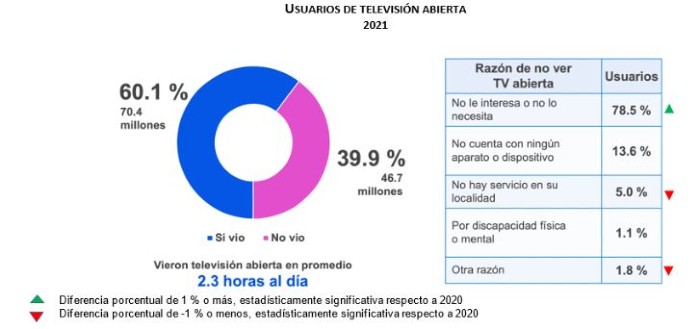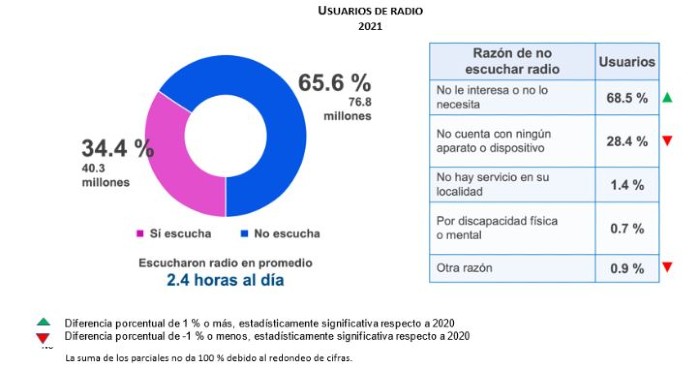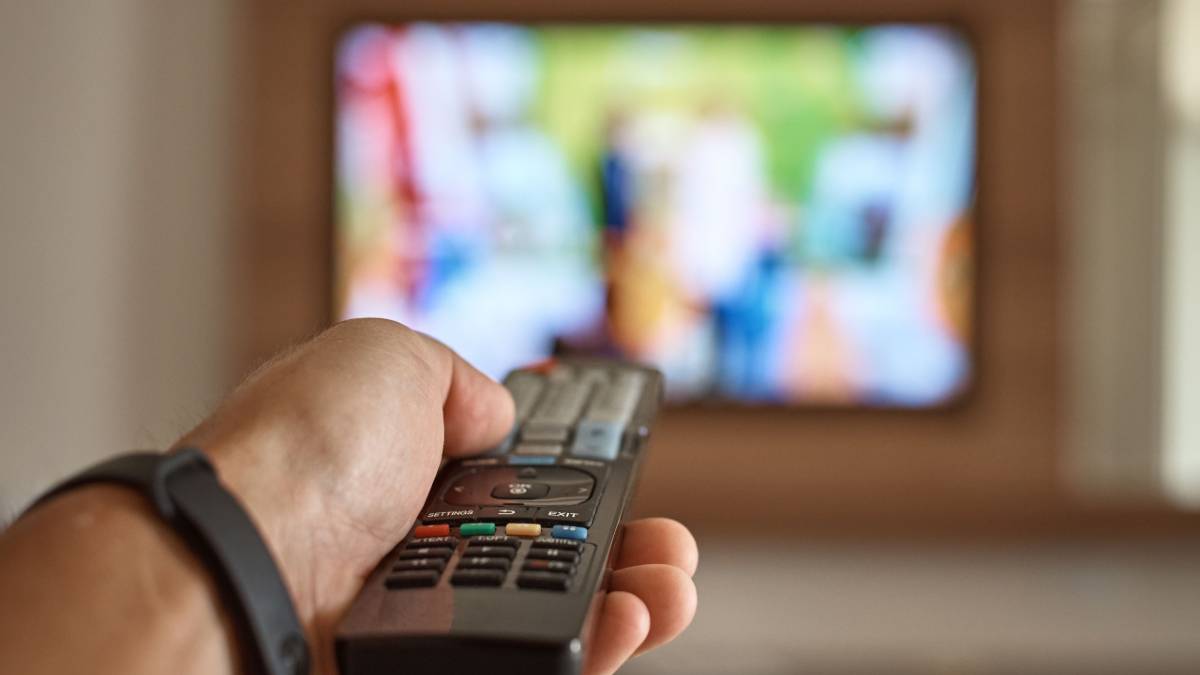It is estimated that in Mexico there are 40.3 million people aged six years or older who use radio, equivalent to 34.4% of the population that used information technologies. They did it 2.5 hours a day.
TVyVideo+Radio
The National Institute of Statistics and Geography, INEGI, in collaboration with the Federal Institute of Telecommunications, IFT, presented the results of the National Survey on Availability and Use of Information Technologies in Households, ENDUTIH, 2021. The purpose of this survey is to obtain information on the availability and use of information and communication technologies in households and their use by individuals aged six years and over in Mexico.
This provides data to support decision-making on public policies. It also offers elements of analysis in national and international studies for users interested in the subject. Here are some of the most interesting results.
Television
EndUTIH estimated 33.4 million households with at least one TV, representing 91.2% of total households.
The states that most had this technology were: Mexico City (96.6%), Jalisco (95.8%) and Coahuila (95.5%). The least: Oaxaca (73.4%), Chiapas (77.7%) and Guerrero (82.8%).
According to ENDUTIH, in 2021, 66.0% of households had only digital television (17.4 percentage points more than in 2017); 12.8% reported having only analog TV (9.9 percentage points less than in 2017) and 12.3% said they had both types of TV (9.6 percentage points less than in 2017). Only 8.8% of households indicated that they did not have any type of TV (2.0 percentage points more than in 2017).
Of the total number of households that had a digital television signal (96.7%), 88.9% received the signal through a digital TV. Of the households that only had analog TV, 6.6% had access to the digital signal through pay TV. On the other hand, households with an analog TV and received a signal through a decoder represented 4.5% of the total.
 Free-to-air television
Free-to-air television
EndUTIH 2021 estimated that 70.4 million people aged six and over (60.1% of the population using information technologies) watched free-to-air television the week before the survey was applied; while 46.7 million people (39.9%) said they had not seen it in the same reference period. People who watched free-to-air television did so, on average, 2.4 hours a day.
On the reasons why users did not watch open television, it was estimated that: 78.5% are not interested or do not need it; 13.6 % does not have any device or device; 5.0% stated that there is no service in their locality; 1.1% did not see her due to a physical or mental disability and 1.8% indicated another reason.
 Radio
Radio
It is estimated that in Mexico there are 40.3 million people aged six years or older who use radio, equivalent to 34.4% of the population that used information technologies when taking as a reference the week before the application of the survey. By contrast, 76.8 million people said they had not listened to radio in the same reference period. People who listened to radio did so, on average, 2.5 hours a day.
68.5% of the non-user population said they are not interested in or do not need to listen to radio; 28.4% indicated that they do not have any device or device; 1.4% said there is no service in their locality; 0.7% did not listen to the radio due to a physical or mental disability and only 0.9% indicated that they did not listen to the radio for some other reason.
Internet
The ENDUTIH estimated that in 2021 there were 88.6 million internet users, representing 75.6% of the population aged six and over. This figure revealed an increase of 4.1 percentage points compared to 2020 (71.5%).
The group that concentrated the highest percentage of internet users was those aged 18 to 24, with a participation of 93.4 percent. It was followed by the 12-17 and 25-34 age groups, both at 90.0 percent. In third place was the group of users aged 35 to 44, who registered 82.7 percent.
The lowest internet use was recorded in people aged 55 and over, with a share of 42.4 percent. Between 2017 and 2021, the trend continued to rise in all age groups and highlighted that of 6 to 11 years. It increased its share by 20.3 percentage points from 2017 to 2021.
89.2% of users connected every day of the week and 10.8% connected at least once a week or less. With respect to 2017, a growth of 8.1 percentage points was observed in those who connected daily.
In South Korea, the United Kingdom, Sweden, Spain, the United States and Japan, nine out of ten people are Internet users. In Mexico, the proportion is seven out of ten people, higher than in Colombia and South Africa.
It is estimated that between 2020 and 2021, households contracted 5.5% more internet packages, while pay-TV packages and those that include fixed telephony were contracted 1.5 and 1.0% less, between both years.
Other statistics
Computer: In 2021, 37.4% of people age 6 and older used a computer. The difference from 2017 is 7.8 percentage points lower. People six years and older who use the computer outside the home decrease year by year. Currently, this group is 6.9 percent. The group that uses it at home did not present significant variations from 2017 to 2021. This represents 30.6% with respect to the population indicated.
Cell phone: Cell phone was one of the technologies with the highest use among the population. The survey estimated that, in 2021, there were 91.7 million people using this technology. This represented 78.3% of the population aged six years or older.


























Leave your comment